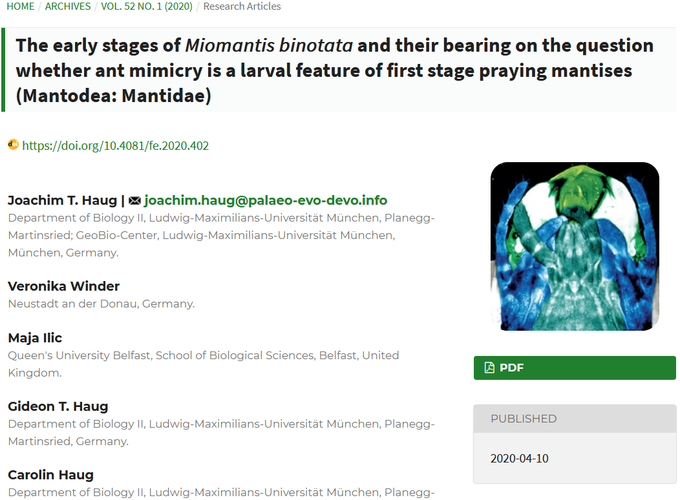The early stages of Miomantis binotata and their bearing on the question whether ant mimicry is a larval feature of first stage praying mantises (Mantodea - Mantidae)
Abstract
Ant mimicry, i.e., the mimicking of ant workers by another organism, is a widespread phenomenon among different groups of Euarthropoda, including spiders and different insect species. One example of ant mimicry occurs among praying mantises (Mantodea); here the first stage nymphs have been recorded to perform ant mimicry. In this study, we investigated different nymphal instars of Miomantis binotata for possible morphological similarities to ants. The different instars were compared as stages supposed to perform ant mimicry would differ morphologically from those stages not supposed to resemble ants. The specimens were investigated under different microscopic settings and measurements were performed. Our results do not show significant differences concerning morphological measurements or shape of structures between the different nymphal instars of M. binotata. One prominent difference between stage one nymphs and later stages occurs in the colouration of the body, which is very dark in the earliest nymph. This difference might explain why young nymphs of Miomantis binotata are interpreted as ant-mimicking, despite the apparent lack of other morphological resemblances.
